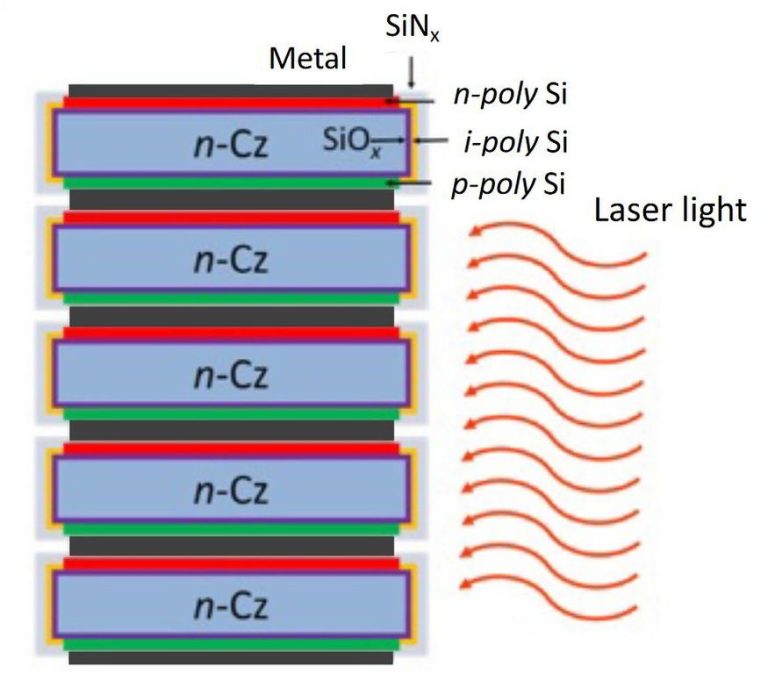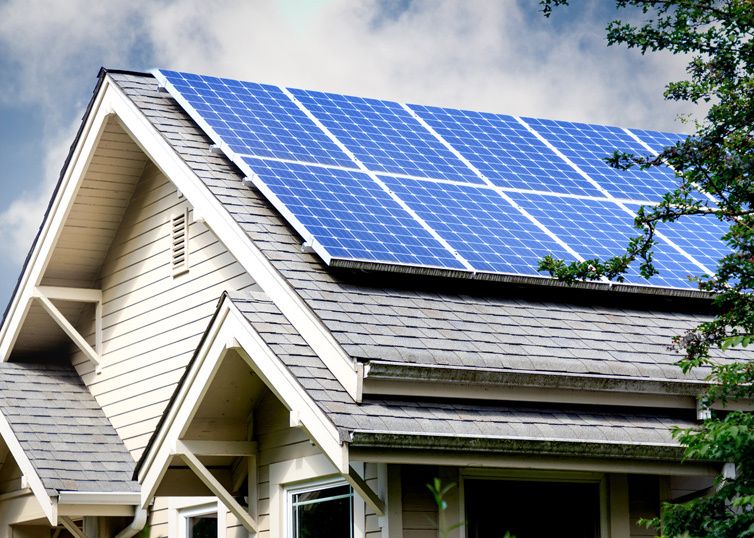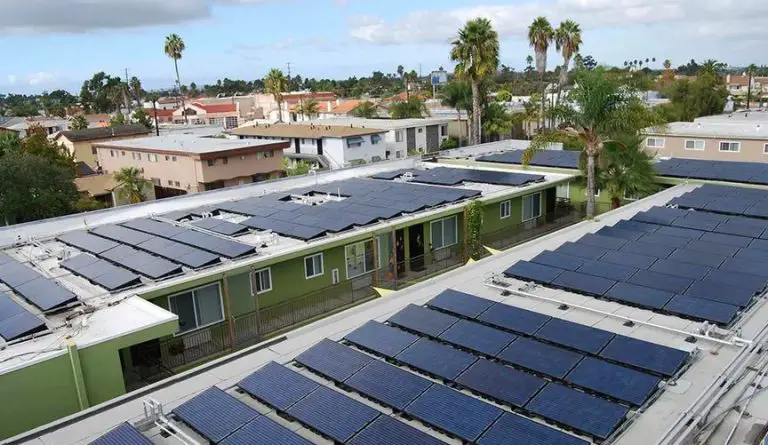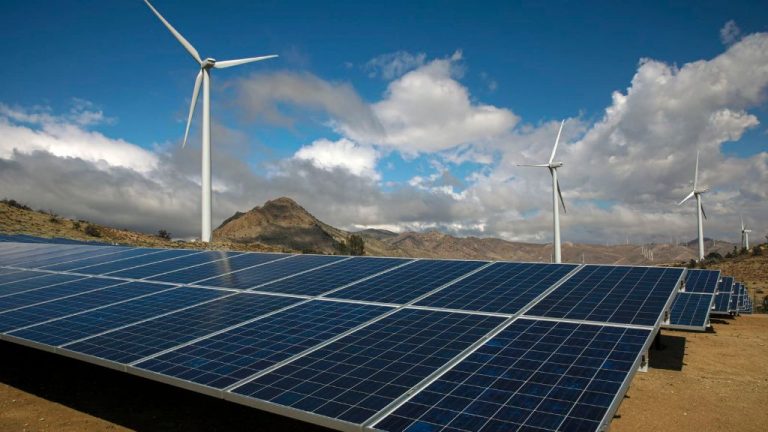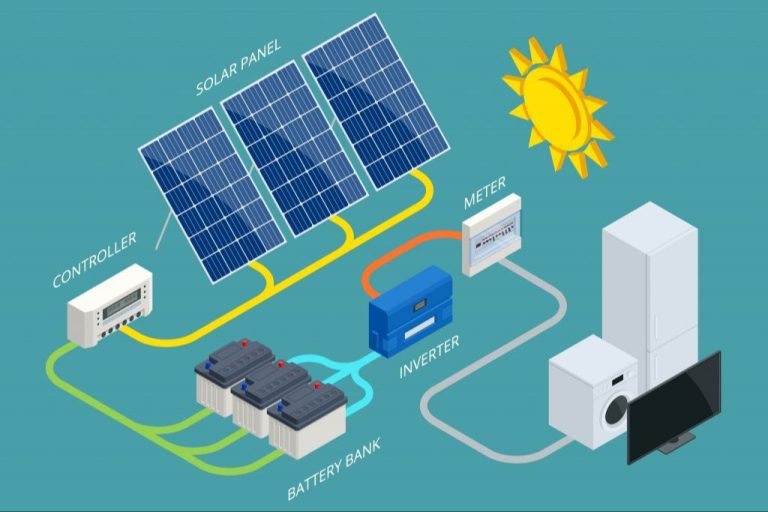Are Solar Energy And Thermal Energy The Same?
Introducing Solar and Thermal Energy
Both solar and thermal energy refer to harnessing the sun’s rays for power, but they utilize the sun’s energy in different ways. Solar energy involves directly converting sunlight into electricity using photovoltaic cells. Thermal energy captures the sun’s heat and uses it to warm air, water, or other fluids to generate power through heat engines or steam turbines [1].
Solar photovoltaic systems convert sunlight into direct current electricity using semiconducting materials that exhibit the photoelectric effect. This electricity can be used immediately or stored in batteries for later use. In contrast, solar thermal systems concentrate sunlight to heat up a medium like water or air that is then used to drive a generator or turbine to produce electricity [1].
While both utilize the sun’s energy, solar PV directly converts photons to electricity, while solar thermal harnesses heat to eventually generate power. They take distinct approaches to harnessing the sun for renewable energy.
Solar Energy Overview
There are two main ways that solar energy is harnessed – through photovoltaics (PV) and solar heating.
Photovoltaics, commonly known as solar panels, work by absorbing photons from sunlight and converting them into electricity. PV cells are made of materials like silicon that release electrons when struck by photons, generating an electric current. This electricity can then be used to power homes, businesses, and the grid (Sunrun, 2021).
Solar heating systems, on the other hand, collect thermal energy from the sun and use it to heat water or air. Common examples are solar water heaters and solar air heaters. The sun’s rays are absorbed by collectors and transferred either directly to water running through tubes or to a heat-transfer fluid, heating it up. This hot liquid or air is then used for various applications like heating swimming pools or spaces inside a building (Palmetto, 2021).
Thermal Energy Overview
Thermal energy refers to the internal energy present in substances due to the motion and collisions of molecules and atoms. It arises from the kinetic energy of random motion of particles in matter (Kinetic Theory). Thermal energy is transferred between substances through heat transfer. There are three main methods of heat transfer – conduction, convection, and radiation.
In conduction, thermal energy is transferred through direct contact between materials. Heat flows from regions of higher temperature to lower temperature until equilibrium is reached. An example is heating one end of a metal rod – the heat will conduct through the rod from the hot end to the colder end. Convection involves the bulk movement of material due to density differences arising from temperature gradients. Hotter, less dense material rises, while colder, denser material sinks. This sets up circulation currents that transfer heat. Radiation works through electromagnetic waves, like light, that are emitted by hot objects and absorbed by cooler ones, heating them up.
Thermal energy flows spontaneously from higher to lower temperatures according to thermodynamic principles, especially the Second Law of Thermodynamics. This law states that the entropy of isolated systems always increases. Entropy is a measure of disorder, so isolated systems evolve towards higher entropy or disorder over time as energy spreads out. Thermal energy seeks to balance temperatures and is dissipative in nature, degrading into lower quality scattered heat.
Overall, thermal energy works through the random motion of microscopic particles that collide and transfer kinetic energy to each other. This kinetic energy spreads out across substances and systems through heat transfer mechanisms like conduction, convection and radiation, obeying thermodynamic laws and the tendency to reach thermal equilibrium through net energy transfers from hot to cold regions.
Key Differences
Solar energy and thermal energy refer to two different types of energy from the sun. While both rely on the sun as an energy source, they utilize and convert that energy in different ways.
Solar energy refers specifically to the light and radiant heat from the sun. It is most often captured through solar photovoltaic (PV) panels which convert sunlight directly into electricity using the photovoltaic effect. This electricity can then be used to power homes, businesses, and the grid (Source).
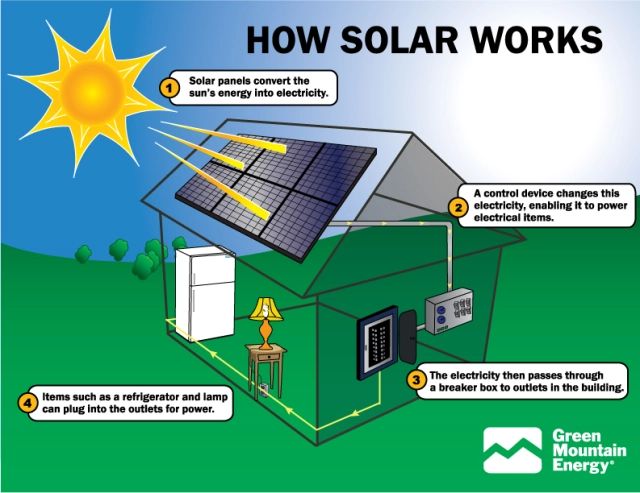
Thermal energy refers to heat energy. Solar thermal systems use the sun’s rays to heat up a fluid like water, oil, or air. This heat energy can then be used for applications like heating buildings, heating water, or generating electricity. Common solar thermal systems include solar water heaters, solar furnaces, solar towers, and concentrated solar power plants (Source).
So in summary, the key differences are:
- Solar PV converts sunlight directly into electricity, while solar thermal converts sunlight into heat.
- Solar PV uses semiconductor materials like silicon, while solar thermal relies on fluids like water or oil.
- Solar PV generates usable electricity, while solar thermal creates heat that must be utilized through additional systems.
Conversion Methods
There are two main methods for converting solar energy into thermal energy:
Solar heating systems use solar collectors with a working fluid to absorb heat from the sun. The working fluid gets heated as it flows through the collector and is then used to heat water or space. Common types of solar collectors include flat-plate collectors, evacuated tube collectors, and concentrating collectors. Flat-plate collectors are the most common and consist of a dark flat-plate absorber under one or more transparent or translucent covers. Evacuated tube collectors contain parallel rows of transparent glass tubes with a glass outer tube and metal absorber tube inside which contains the heat transfer fluid. Concentrating collectors use reflective surfaces to concentrate sunlight onto an absorber [1].
Solar thermal electricity generation uses concentrated solar power (CSP) systems. CSP technologies concentrate sunlight using mirrors to heat a transfer fluid that produces steam to run a turbine generator. Common CSP systems include parabolic trough systems, solar power towers, parabolic dish systems, and linear Fresnel reflector systems. Parabolic trough systems use U-shaped mirrors to focus sunlight on a tube containing oil, which heats up to 390°C and transfers heat to boil water to power a steam turbine. Solar power towers use a field of flat mirrors (heliostats) that track the sun and focus sunlight onto a receiver on top of a tower filled with a heat transfer fluid that produces steam. Parabolic dish systems are dish-shaped concentrators that focus sunlight onto a thermal receiver at the focal point, heating fluid to run a generator [2].
Applications
Solar energy and thermal energy each have different common applications. Here are some key uses for each:
- Solar energy is often used for electricity generation through photovoltaic solar panels. It can also be used for heating water and spaces through solar thermal collectors. Solar energy is a common way to provide energy to remote off-grid locations.
- Thermal energy is commonly used for heating and cooling buildings through systems like furnaces, boilers, heat pumps, and air conditioners. It can also be used in thermal power plants to generate electricity. Many industrial processes rely on thermal energy for operations like smelting, distilling, drying, etc.
So in summary, solar energy is more often used directly for electricity, heating, and in remote locations, while thermal energy powers heating/cooling systems and industrial processes. But there is some overlap in applications like water heating.
Efficiency
When comparing the efficiency of solar and thermal energy generation, there are some key differences to consider. Solar photovoltaic (PV) panels that convert sunlight directly into electricity typically have efficiencies around 15-20% (1). This means that 15-20% of the sunlight that hits the solar panels gets converted into usable electricity. In contrast, solar thermal technologies that use mirrors or lenses to concentrate sunlight to heat a fluid can reach much higher efficiencies. Concentrating solar thermal plants can have efficiencies of over 70%, with some experimental systems reaching over 90% efficiency (2).
The reason solar thermal systems can reach such high efficiencies is because it is easier to convert absorbed solar energy into heat rather than directly into electricity. Solar thermal systems use the heat to drive a steam turbine or engine that then generates electricity. This extra step allows solar thermal to utilize a greater percentage of the incoming solar energy when compared to solar PV. However, solar PV panels are simpler in design than solar thermal plants, which require complex mirrored systems to concentrate the sunlight. So while solar PV has lower efficiency, the technology is more modular and scalable (3).
In summary, solar thermal conversion can utilize 70% or more of the incoming solar energy, substantially higher than the 15-20% efficiency of direct solar PV conversion. But the concentrating systems needed for solar thermal are more complex than simple solar panels. So there are tradeoffs between efficiency, complexity and modularity when comparing these two solar technologies.
Cost Comparison
When comparing the costs of solar energy versus thermal energy, there are a few key factors to consider. Solar energy has seen dramatic cost reductions in recent years, while thermal energy costs have remained more constant.
According to research from the University of Côte d’Azur, the levelized cost of energy (LCOE) for solar photovoltaics has dropped below $0.05/kWh in some regions, making it highly competitive with conventional energy sources (Source). In contrast, the LCOE for thermal energy is around $0.05-0.07/kWh.
Recent technological advances and manufacturing improvements have driven down the costs of solar panels, inverters and other system components (Source). Thermal energy costs have remained more steady over time.
According to the Department of General Services in California, the average installed cost for a residential solar PV system is now $2.80/Watt, compared to over $7/Watt a decade ago. In comparison, the capital costs for a natural gas power plant can range from $700-1,000/kW (Source).
In summary, the rapid decline in solar energy costs gives it a strong economic advantage over conventional thermal energy sources like natural gas and coal in many situations.
Environmental Impact
Solar energy has both positive and negative environmental impacts compared to other energy sources like coal, natural gas, or nuclear power (UCSUSA, 2013). On the positive side, solar power plants and panels do not produce any air pollution, greenhouse gas emissions, or radioactive waste while operating, making them one of the cleanest energy sources available (EIA, 2022). The environmental benefits of solar energy include reducing air pollution, mitigating climate change, and protecting public health (DOE, 2022). According to one analysis, generating electricity from solar power rather than fossil fuels avoids emissions of up to 0.5 pounds of nitrogen oxides, 1.0 pounds of sulfur dioxide, and 1.0 pounds of carbon dioxide per kilowatt-hour (UCSUSA, 2013).
However, there are some potential negative environmental effects of solar energy to consider. Producing solar panels requires energy and rare materials that have to be mined, which can disrupt habitats and release hazardous waste. Large utility-scale solar installations can also take up significant land area and disrupt ecosystems (EIA, 2022). Proper siting, planning, and monitoring during construction and operation can help reduce the environmental impacts and land use conflicts associated with solar facilities (DOE, 2022). Overall, analyses show solar power results in significantly fewer lifecycle environmental impacts compared to conventional sources, but the industry should continue innovating to further reduce any negative effects.
Conclusion:
Solar energy and thermal energy are different forms of energy with distinct properties. Solar energy comes directly from the sun and is a renewable energy source. It is converted into electricity using photovoltaic panels or concentrated solar power plants. Thermal energy is the internal energy within a system due to the vibration and movement of molecules and atoms. It is produced from the burning of fossil fuels like coal, oil, and natural gas. While both can be used for heating and electricity generation, solar energy emits no greenhouse gases while most thermal energy generation emits CO2. Solar energy has higher upfront costs but lower operating costs compared to thermal energy. Overall, solar and thermal energy utilize different mechanisms for harnessing energy and have significantly different environmental and cost profiles.

